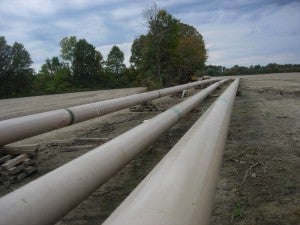 In an ideal world, our electricity system would run on 100 percent clean, renewable energy. Moving toward that goal means transitioning away from a system of centralized, fossil fuel power plants, to an intelligent, efficient, networked energy grid that smoothly integrates vastly increased amounts of renewables and energy-efficient solutions.
In an ideal world, our electricity system would run on 100 percent clean, renewable energy. Moving toward that goal means transitioning away from a system of centralized, fossil fuel power plants, to an intelligent, efficient, networked energy grid that smoothly integrates vastly increased amounts of renewables and energy-efficient solutions.
To do that, we have to balance the intermittency of renewables with our steady need for electricity. That’s where natural gas comes in: When the sun stops shining or the wind stops blowing and renewables are offline, gas-fired plants can ramp up more quickly and efficiently than coal plants.
Many policymakers, regulators and industry members believe we have to build thousands of miles of new pipelines costing $150 billion or more to feed this need. But that could be an unnecessary and expensive mistake, not just now but over a very long term. Read More














